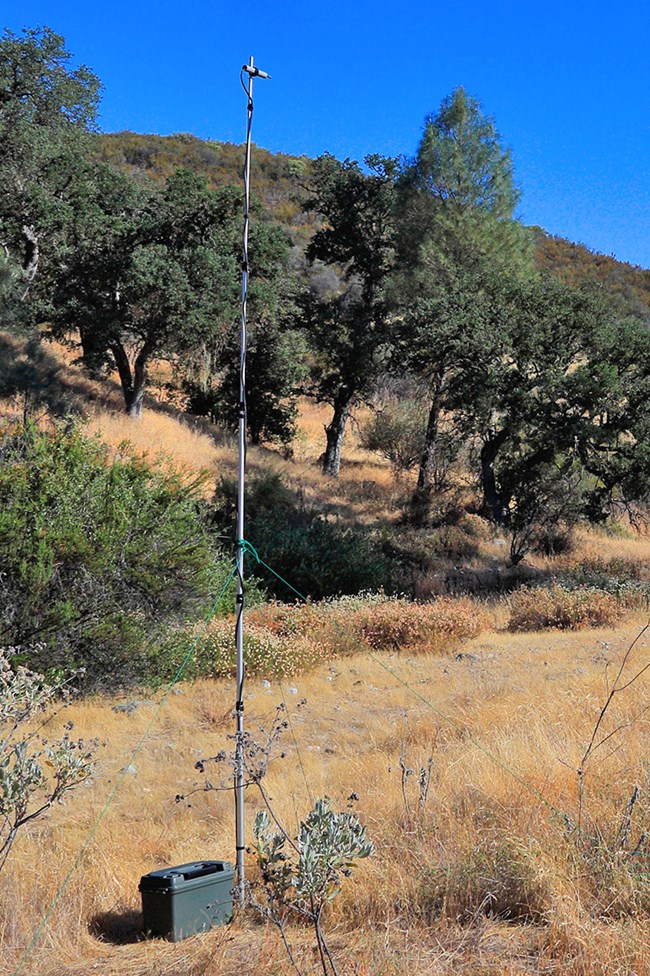Last updated: October 30, 2020
Article
Acoustic Bat Monitoring Starts Yielding Results at Pinnacles National Park

NPS / Gavin Emmons
October 2020 - Where would we be without bats? Our Halloweens certainly wouldn’t be the same! But far scarier: without bats, we and our crops would have a lot more insect pests to contend with. All of the bats in the San Francisco Bay Area are insect-eaters. Since bats are facing so many challenges nationwide, from white-nose syndrome to climate change, scientists are working hard to inform conservation efforts by learning more about our local bats.
In 2017, biologists at Pinnacles National Park began to systematically track resident bats via mist netting and acoustic monitoring. Mist netting was a no-go this year due to the coronavirus. However from July 13-17, biologists did deploy acoustic bat detectors (according to NABat protocols) at four sites throughout the park for a fourth year in a row.
Since bat calls are mostly too high for people to hear, biologists use sonograms—visual representations of the sounds—to attribute the calls recorded by the bat detectors to particular bat species. Even with the help of software, this can be time consuming. Data from this year won’t be available for awhile. But USGS bat biologists have processed the first two seasons of bat recordings from Pinnacles.
In 2017 and 2018, western mastiff bats and Brazilian free-tailed bats were the most commonly detected species. Western mastiffs are the largest bats in North America, and a Species of Special Concern. They roost mainly on cliffs and aren’t found in other San Francisco Bay Area parks. Big brown bat, California myotis, and canyon bat calls also turned up with some frequency. In contrast, Pinnacles bat detectors picked up only two western red bat calls in 2017, and none in 2018.

And which park site had the most bats? So far, Bear Gulch Reservoir is the site to beat for most detections and the most species detected in a season. In 2017, the detector there picked up 1,422 calls from all 14 species of bats known to occur in the park. The detector in Marion Canyon, in open pine/oak woodland near a willow-lined creek, also picked up high numbers of bat calls and just one fewer species. With a lot of variation in the first two years of data overall, it's too soon to know what might change or what these early results might mean. But Pinnacles biologists and bat lovers look forward to finding out in the years ahead!
For More Information
- Pinnacles National Park Bats webpage
- Pacific Coast Science and Learning Center Bats webpage
- USGS Bat Research in California webpage
- Contact Wildlife Biologist Gavn Emmons
